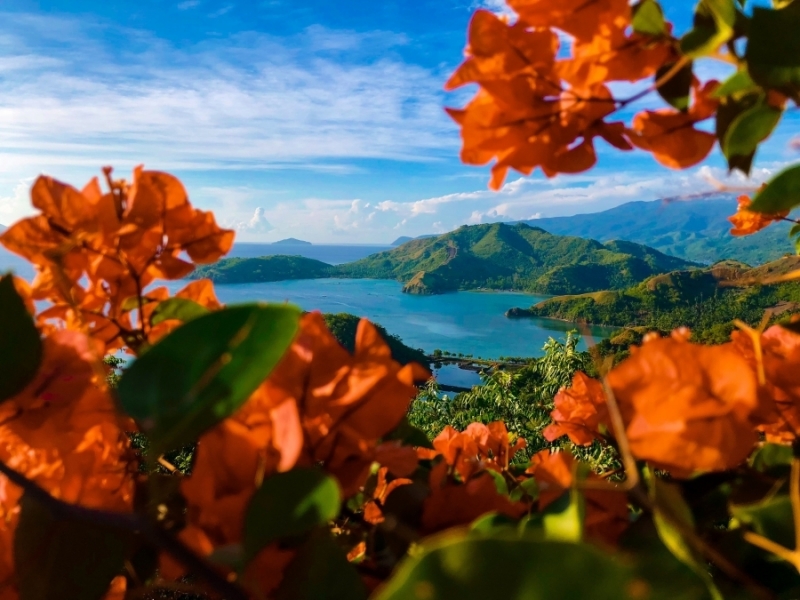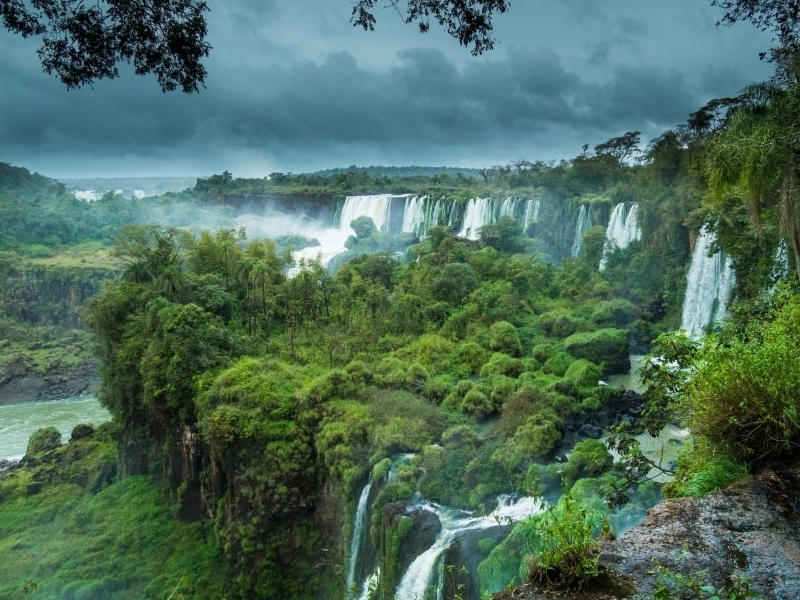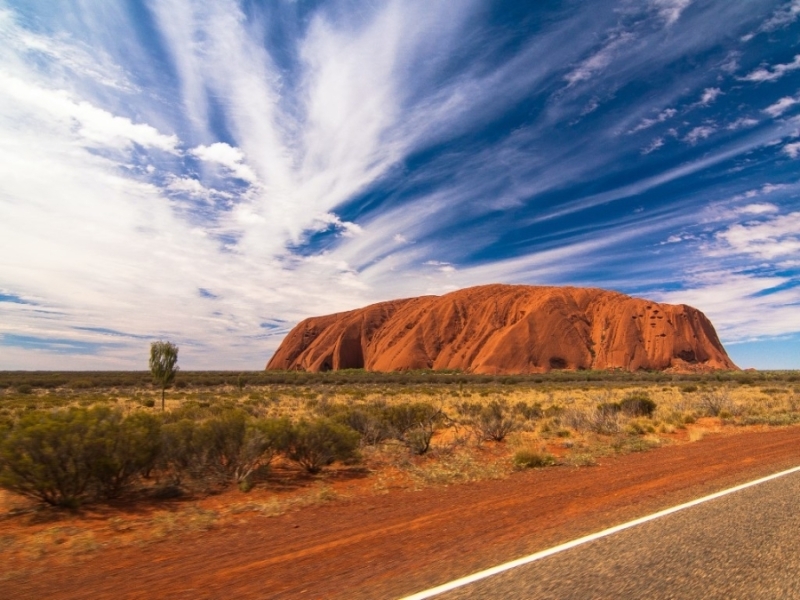News and Testimonials

Know before you go: the Philippines
Whether you’re visiting a bustling city or chilling out on a beach, prepare for your trip to the Philippines with this eco-friendly guide.
Located in the Pacific Ocean near the equator, the Republic of the Philippines consists of around 7,640 islands — about 2,000 of which are inhabited — that form an archipelago. The country can be divided into three main areas: Luzon (the largest, northernmost island, which includes Manila); a group of islands called the Visayas (including the major islands Panay, Negros, Cebu, Bohol, Leyte, Samar, and Masbate); and Mindanao, the second-largest island in the Philippines, found at the southern end of the archipelago.
From bustling cities to stunning beaches and mountains, the Philippines has a lot to offer adventurous explorers. Here are a few tips, tricks, and resources for travelers looking to find fun in the Philippines.
CITIES TO VISIT
Manila
Manila, known as the “Pearl of the Orient”, is the nation’s capital city. This bustling historic city is full of things to see and do — including museums, parks, theaters, shopping malls and a plethora of restaurants to choose from. The Philippines is quickly becoming a destination for foodies, and Manila is well known for its varied cuisine and street food markets, like the Legazpi Sunday Market, Quiapo Market, and the country’s very own Chinatown, Binondo.
Davao City
Considered the largest city in the Philippines (by size) and capital city of the Davao region, Davao City is a great getaway. Popular destinations include Eden Nature Park (a mountain resort perfect for relaxation), Malagos Garden Resort (a 12-hectare nature theme park that features the first chocolate museum in the Philippines), and Jack’s Ridge (a dining destination with a spectacular view of the city). Mount Apo, the highest mountain in the Philippines and a mountaineer’s dream, is also in Davao City. Its highest point reaches an elevation of 2,954 meters (9,692 feet). Davao is also known as the home to the critically-endangered bird species the Philippine Eagle (also known as the monkey-eating eagle), which was named as the national bird of the Philippines.
Cebu City
A perfect balance of island coast and cosmopolitan living, Cebu City is one of the Philippines’ top destinations among both foreign and domestic travelers. It’s also the country’s oldest city and one of the birthplaces of Christianity in the Philippines. Just outside the city’s borders, tourists can enjoy swimming with a variety of species off the coast of the island, or they can try more adventurous activities like canyoneering at Kawasan Falls.
Vigan
Dating back to the Spanish colonial era, Vigan sits on the western coast of the island of Luzon, near Manila. Historic Vigan is a UNESCO World Heritage site and is full of unique architecture reflecting a fusion of Asian and European design, and cobblestone streets.
Sustainable travel tip:
Bring along an eco-bag when you visit the small shops of Vigan to reduce the need for a plastic bag.
BEACHES
Since the Philippines has thousands of islands, visitors are never far from a beach. You might want to try one of these under-the-radar locations that are emerging as popular beach destinations that go above and beyond the Philippines’ most well-known beach, Boracay.
Panglao Island (Bohol)
The main gateway to the province of Bohol, Panglao Island to the southwest is a 20-kilometer long limestone island known for its popular diving spots. You’ll also find many white-sand beaches like Alona, Tawala, Dumaluan, and Doljo, all accessed via the newly-built Panglao-Bohol International Airport.
Panglao houses some of Bohol’s premium accommodation establishments offering 5-star amenities and services. The island also serves as the jumping point for other water-based adventures, such as dolphin and whale watching at Pamilacan Island, and diving at Balicasag Island.
Sustainable travel tip:
Look for sunscreens labeled “reef safe”, which are formulated without ingredients that can be toxic to coral reefs and marine life.
El Nido
El Nido, part of Palawan Island, has white-sand beaches, limestone cliffs, coral reefs, and clear, fish-filled waters, so it’s a popular spot for swimming, diving, and kayaking. El Nido serves as a jumping-off point for island-hopping and exploring the secrets of the Bacuit Archipelago.
Camiguin
Known as the Island Born of Fire, Camiguin is a pear-shaped island with 7 volcanoes that formed many of its unique attractions. The island is full of natural wonders, including lagoons and lakes; cold, hot and soda springs; pristine waterfalls; and white-sand beaches on par with the finest in the country.
Siargao
If surfing is more your style, this lesser-known location, near the island of Mindanao, is renowned for its quality waves, cool island culture, beautiful reefs, blue waters, and stunning resorts.
Sustainable travel tip:
Visiting lesser-known spots such as Siargao doesn't just mean fewer lines and better selfies, but a decreased impact on the environment.
Calauit Island
Calauit Island, known for the crystal-clear waters off its shores, offers eco-tourists the chance to swim with dugongs. These animals, which are related to manatees, are believed to have inspired legends about mermaids. Locals on Calauit Island lead conservation-minded tours and teach tourists about dugongs and how they can help ensure their continued survival.
Sustainable travel tip:
To ensure the sustainability of the ocean ecosystems, please do not touch the corals. Local vendors have a wide selection of souvenirs.
Chocolate Hills
On the island of Bohol, the famous Chocolate Hills look like something from another world as they seem to tumble out, one after another, for as far as the eye can see. The beautiful landscape is actually a natural formation that slowly took shape over eons. In the summer, when the 1,200+ peaked and rounded mounds aren’t covered in green vegetation, they’re said to look like — you guessed it — chocolate. The majestic Chocolate Hills has been designated as a National Geological Monument by the Philippines.
Ifugao Rice Terraces
The Ifugao Rice Terraces are another example of the beautiful landscapes that can be found throughout the Philippines. The mountains of the Ifugao province have been cultivated for thousands of years with terraced fields where rice is farmed. Not only are the rice terraces beautiful to behold, but they’re also an example of industry working in harmony with nature.
NATIONAL PARKS
The Philippines is home to more than 30 national parks, including these top-rated ones: Calauit Safari Park, Puerto Princesa Subterranean River National Park, Aurora Memorial National Park, Biak-na-Bato National Park, Caramoan Peninsula National Park, Libmanan Caves National Park, Mounts Iglit–Baco National Park Fuyot Springs National Park and Minalungao National Park. The parks offer activities like zip lining, boating, camping, hiking, river cruising, wildlife spotting, snorkeling, and kayaking.
Sustainable travel tip:
There are dedicated companies that specialize in eco-tourism, and resources, such as Simply Philippines, to help make sustainable adventure more accessible.
BEFORE YOU GO
Travel requirements
Travelers from the U.S. will need a valid passport but do not need to secure a visa to visit the Philippines. The World Health Organization recommends the following vaccinations for traveling to the islands: hepatitis A, hepatitis B, typhoid, cholera, yellow fever, Japanese encephalitis, rabies, meningitis, polio, measles, mumps and rubella (MMR), T-DAP (tetanus, diphtheria and pertussis), chickenpox, shingles, pneumonia, and influenza.
When to go
The high season for tourism is December to April. The Philippines is a tropical country, and the hotter, drier months (85 degrees F and up) are March through June. July through October brings the potential for typhoons; the “cooler” season runs from November to February, when it remains at around 78 degrees F. The further south you go, the more humid the weather gets, and rain showers are likely regardless of the season.
Sustainable travel tip:
Don’t purchase travel-sized toiletries in plastic bottles. Instead, use refillable containers or look for packaging-free alternatives, like shampoo bars. You can also find multi-use products, like Castile soaps, that can be used for washing your hair, body, and even clothing.
What to pack
Bring lightweight, comfortable clothing (it can be casual) and make sure to pack a swimsuit if you plan on heading to the beach or doing any boating or diving. You’ll want to have a pair of sunglasses as well as rain gear, and make sure to bring comfortable shoes like sneakers or sandals. A waterproof bag can be helpful for keeping electronics, like phones and cameras, dry. Sunscreen and a mosquito repellent that contains DEET are must-bring items.
Sustainable travel tip:
It always helps to bring your own reusable bag or bag-for-life along with your backpack to prevent additional plastic waste.
Getting around
Most people traveling to the Philippines from the U.S. will probably fly into Manila’s NAIA airport or the more recently opened Mactan-Cebu International Airport, which was named the Asia-Pacific Medium Airport of the Year in the CAPA 2018 Asia Aviation Awards for Excellence.
If you want to go to multiple islands, you can find flights that connect to smaller airports throughout the Philippines. Traveling by boat is also an option when getting to many of the islands in the region. If you’re in one of the major cities, “jeepneys” — small and colorful buses — are a popular way to get around.
Currency
The Philippine Peso is the official currency of the Philippines. Each peso consists of 100 centavos. Bills and coins are used in the Philippines. It’s easy to exchange money at a shopping mall, and traveler’s checks are usually accepted for money exchange. ATMs are readily available in the major cities, but if you’re traveling to smaller islands or more remote areas, it’s a good idea to stock up on cash before your arrival. Credit cards are accepted in the bigger cities and more populated beach areas. Keep your small change for paying jeepney drivers.
Sustainable travel tip:
Consider donating your leftover currency at the end of your trip to a local charity dedicated to cleaning beaches or preserving wildlife.
Language and culture
Filipino and English are the official languages of the Philippines — but the Philippines is an ethnically diverse country (and was a Spanish colony for 300 years), so more than 150 languages are spoken in the region. Tagalog is a common dialect.
The dominant religion in the Philippines is Catholicism, and churches abound throughout the country. The older generations in the Philippines tend to be quite religious.
Source: https://www.nationalgeographic.com/travel/article/partner-content-know-before-you-go-the-philippines










